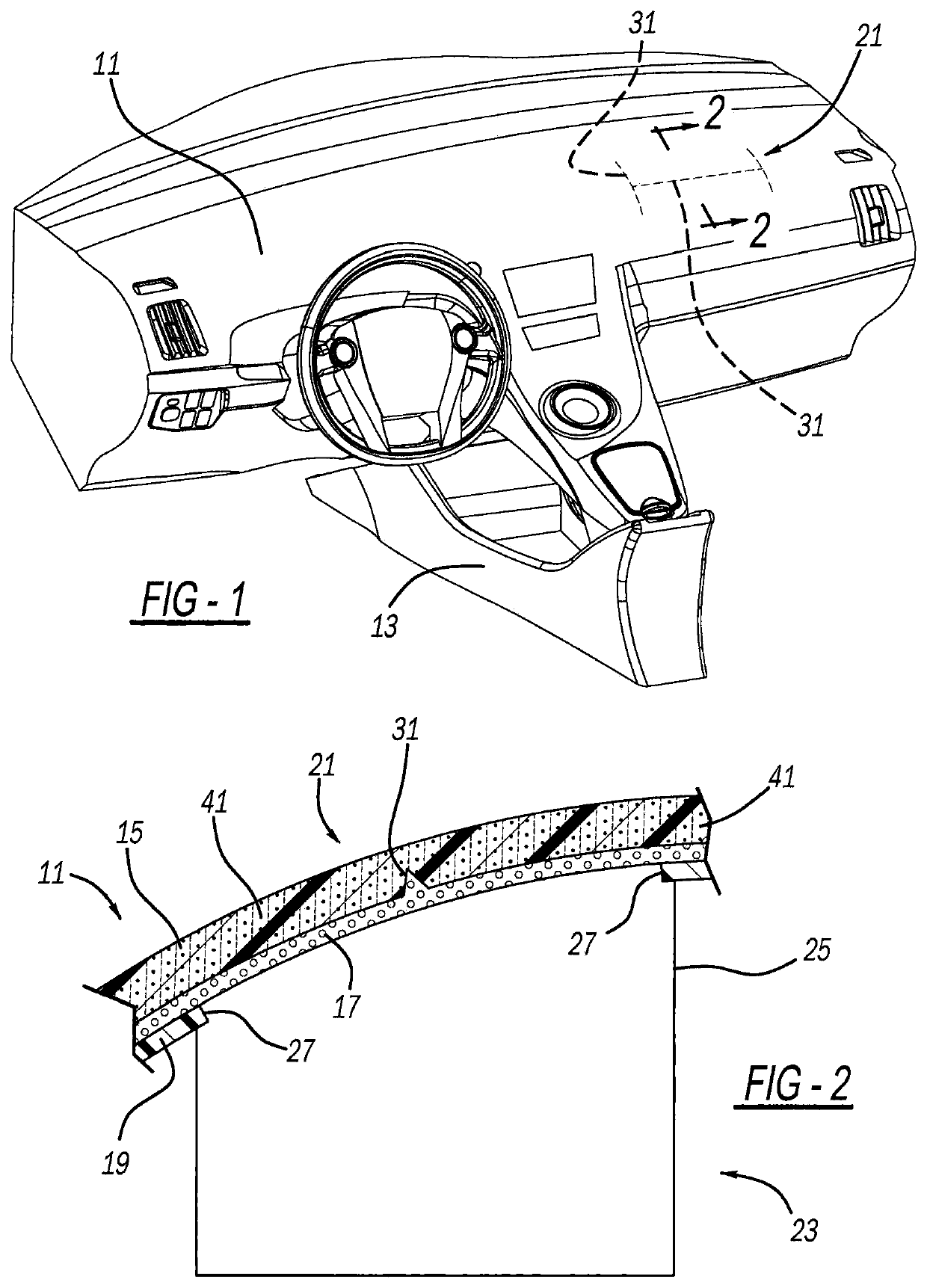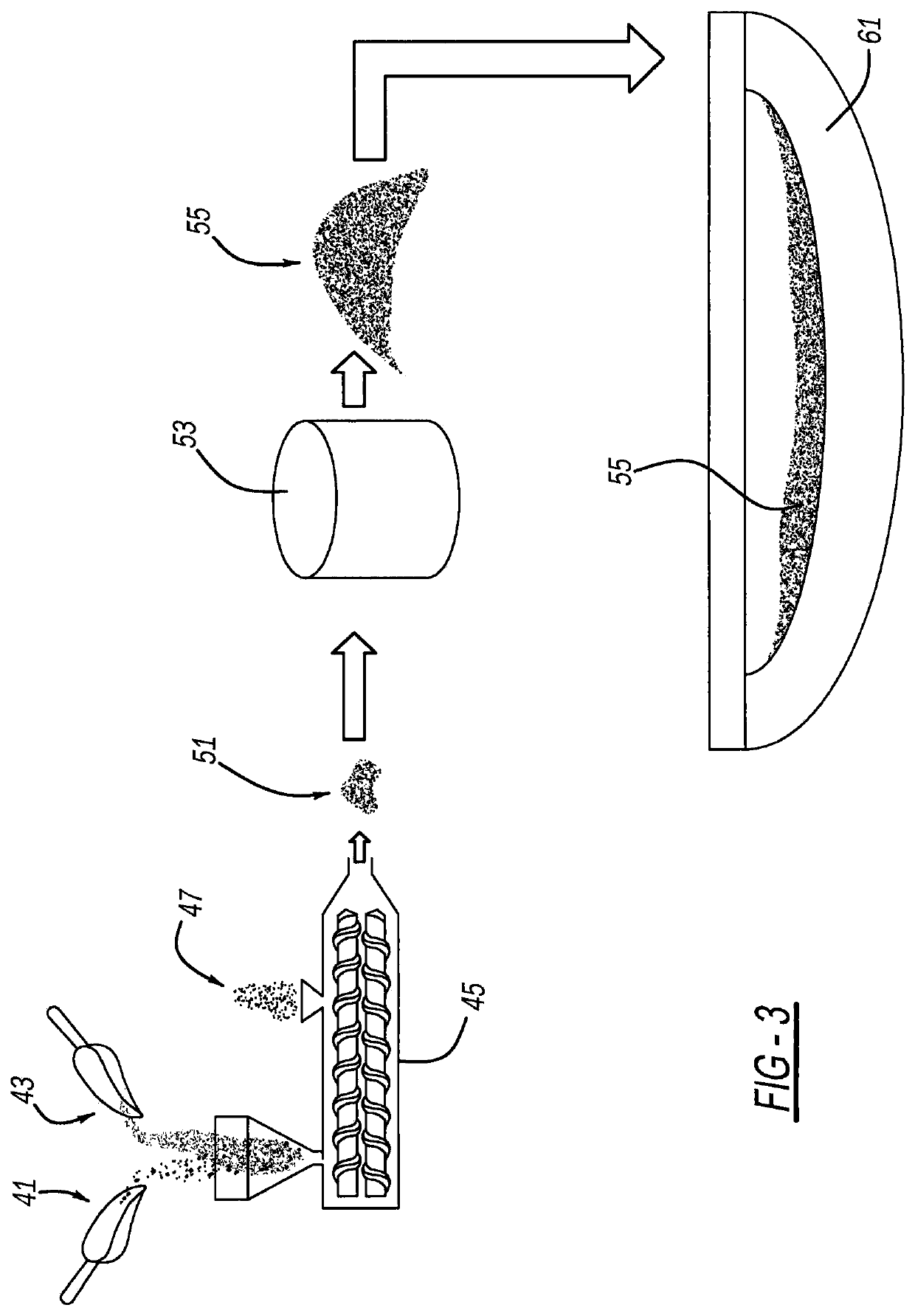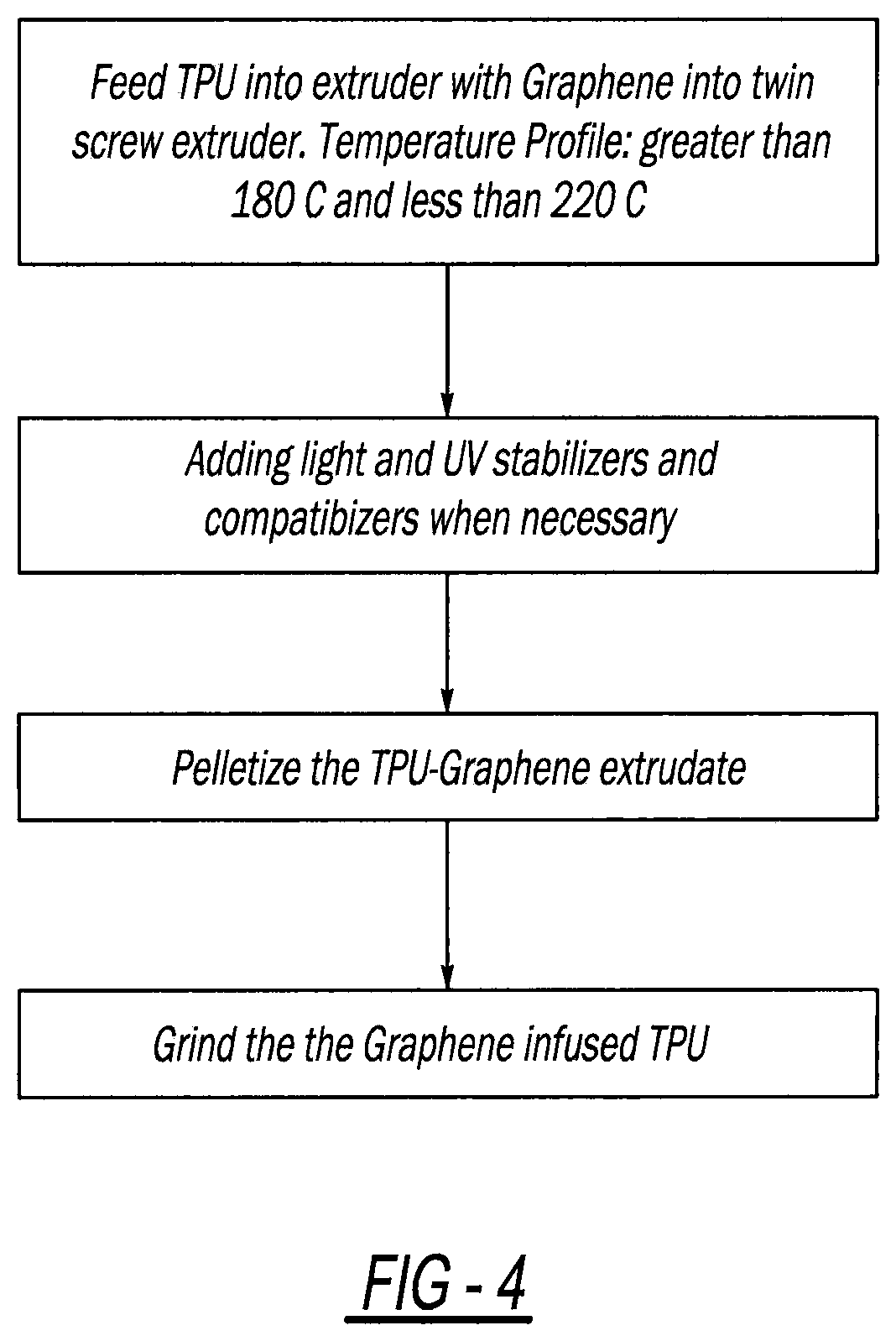Urethane And Graphene Interior Trim Panel
a graphene and interior trim technology, applied in the field of interior trim panels, can solve the problems of tpu, undetected “self-heal, tpu and pvc blends/alloys exhibit reductions of their original physical properties, tpu to become hard and rigid, etc., to achieve enhanced heat performance, improved electromagnetic interference (“emi”) shielding properties, and improved heat dissipation
- Summary
- Abstract
- Description
- Claims
- Application Information
AI Technical Summary
Benefits of technology
Problems solved by technology
Method used
Image
Examples
Embodiment Construction
[0011]An interior trim panel for a wheeled automotive land vehicle is shown in FIGS. 1 and 2. The interior trim panel is preferably an instrument panel 11 but may alternately include a center console 13, a separate airbag cover, a door trim panel, center console, a knee bolster, a seat mechanism cover, a pillar cover, or the like. Instrument panel 11 includes an outer skin 15, a middle pliable foam layer 17 and an inner rigid substrate 19.
[0012]A section of skin 15 acts as an integral airbag door 21 behind which is an airbag assembly 23 including a chute 25. Airbag door 21 hinges or pivots about upper and lower flexure lines adjacent generally horizontally elongated substrate edges 27 when an expanding airbag bursts tear seams 31 in skin 15. A “seamless” or hidden style of skin 15 is preferred whereby tear seams 31 are on the backside surface thereof and are not visible to the vehicle occupant or user. Tear seams 31 preferably have an H-shape, although other configurations such as U...
PUM
| Property | Measurement | Unit |
|---|---|---|
| elongation | aaaaa | aaaaa |
| Angle of Repose | aaaaa | aaaaa |
| EMI shielding effectiveness | aaaaa | aaaaa |
Abstract
Description
Claims
Application Information
 Login to View More
Login to View More - R&D
- Intellectual Property
- Life Sciences
- Materials
- Tech Scout
- Unparalleled Data Quality
- Higher Quality Content
- 60% Fewer Hallucinations
Browse by: Latest US Patents, China's latest patents, Technical Efficacy Thesaurus, Application Domain, Technology Topic, Popular Technical Reports.
© 2025 PatSnap. All rights reserved.Legal|Privacy policy|Modern Slavery Act Transparency Statement|Sitemap|About US| Contact US: help@patsnap.com



